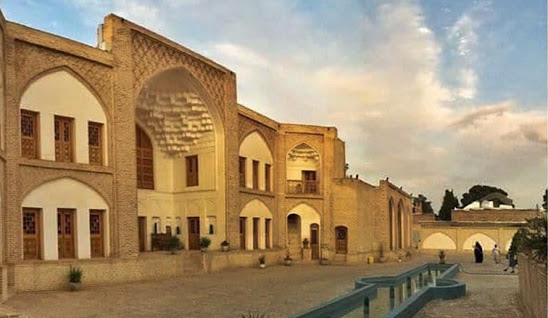شهر ساوه





Introduction
Saveh, a city located in the central province of Iran, is a place steeped in history and known for its remarkable heritage. With a population of approximately 220,762 people as of 1395, Saveh has emerged as a significant cultural and historical destination in the region. This article delves into the fascinating aspects of Saveh, exploring its ancient roots, geographical significance, and the prominence of its iron industry. Join us on this journey to discover the hidden treasures of this remarkable city.
Historical Background
Saveh stands as a testament to Iran’s rich history, dating back to the Sasanian period. It was a thriving city on the major caravan routes connecting Rey, Hamedan, Isfahan, Qazvin, Zanjan, Qom, and Kashan. Saveh played a crucial role as a vital trade hub and a prominent settlement during the Parthian, Samanid, and Al-Buwayh dynasties. The city witnessed the rise and fall of various rulers, leaving behind a legacy that still captivates historians and archaeologists today.
During the Mongol invasion in the 7th century, Saveh suffered significant damage and devastation. The city was ransacked, and its people endured immense hardship. The grand libraries and museums of Saveh fell victim to the flames, resulting in the destruction of invaluable books and artifacts, erasing a part of its history forever.
Geography and Location
Saveh is strategically positioned, bordered by Zarandieh and Qazvin provinces to the north, Tafresh county to the south, Qom province to the southeast, Tehran province to the east, and Hamedan province and Khomein county to the west and southwest, respectively. Its central location in Iran makes Saveh a vital crossroad connecting various regions and offering easy access to neighboring cities.
Climate
Saveh experiences a moderate climate, with an average annual temperature of 18.2 degrees Celsius. The city enjoys warm summers and mild winters, creating a pleasant environment throughout the year. The favorable weather conditions contribute to the agricultural productivity of the region, making Saveh an important agricultural center.
Unveiling the Name: Saveh’s Origin and Meanings
The name “Saveh” has diverse interpretations, each offering an intriguing insight into the city’s history and culture. Some scholars believe that the name is derived from the Avestan word “Sava” or the Pahlavi term “Savaka.” Others associate Saveh with the Turanian hero “Saveh Shah,” while another theory suggests that it refers to a place with three rivers, as “Saveh” can be interpreted as “Saha-Ab” or “Siah-Ab” in Persian.
Interestingly, “Saveh” also means “small gold” in Persian. This interpretation finds support in the presence of regions within Saveh, such as Zarand and Gavah, which reinforce the significance of gold in the area.


Saveh’s Cultural Heritage: Preserving the Past
Saveh is home to numerous cultural heritage sites that bear witness to its rich history and architectural marvels. The city’s ancient structures, including mosques, mausoleums, and historical buildings, provide a glimpse into its glorious past. The Sardaran Square, adorned with a majestic mosque minaret, stands as a symbol of Saveh’s architectural prowess.
Moreover, the city’s museums and historical collections offer a treasure trove of artifacts and relics, showcasing the diverse cultural influences that have shaped Saveh over the centuries. Despite the challenges faced during various periods of turmoil, Saveh’s commitment to preserving its cultural heritage remains unwavering.
Saveh Today: A Blend of Tradition and Modernity
Saveh’s historical significance and thriving iron industry have not confined it to the past. The city has embraced modernity while preserving its traditional roots. Today, Saveh stands as a bustling urban center, offering a range of amenities and services to its residents and visitors.
The city’s vibrant markets and bazaars continue to showcase the craftsmanship of its artisans, where visitors can explore the diverse range of iron products and handicrafts. Saveh’s cultural festivals and events celebrate its heritage, attracting tourists from far and wide.
Conclusion
Saveh, with its rich heritage and thriving iron industry, stands as a testament to Iran’s remarkable history and cultural diversity. The city’s historical significance, coupled with its modern outlook, creates a unique blend that captivates visitors and residents alike. As Saveh continues to evolve and embrace the future, it remains rooted in its past, preserving its cultural heritage for generations to come.
Experience the allure of Saveh, where the echoes of ancient civilizations resonate through its streets, and the craftsmanship of its iron industry continues to enchant all who encounter it.
Additional Information:The iron industry of Saveh has expanded beyond traditional craftsmanship. With advancements in technology and modern techniques, Saveh now produces a wide range of iron products, including industrial machinery, construction materials, and household items. The city’s iron industry has become a significant contributor to Iran’s economy, attracting investment and generating employment opportunities. Saveh’s iron production is not limited to domestic consumption; it has also gained recognition in international markets, exporting its products to various countries. The city’s iron foundries and manufacturing facilities have adopted modern methods while upholding the legacy of traditional ironworking techniques. With its rich history and thriving iron industry, Saveh continues to make its mark on Iran’s industrial landscape.
